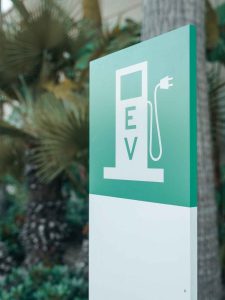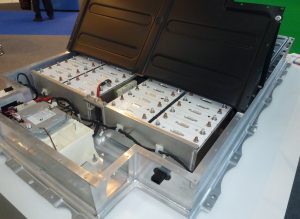Lithium is a valuable mineral used in a wide range of activities we engage in on a regular basis, from mobile phones to laptops and even electric vehicles. With an ever-increasing emphasis on transitioning to sustainable energy sources worldwide, the demand for lithium has increased significantly.
This article will explore the role of lithium ore in electric vehicles and beyond, highlighting its importance in the future of transportation and clean energy.
Introduction
Electric vehicles (EVs) have become increasingly popular as the world moves towards a sustainable future. However, the success of EVs is heavily dependent on battery technology. Electric vehicles primarily rely on lithium-ion batteries as their preferred power source due to their high energy density, low self-discharge rate, and long lifespan.
The growth of the EV market has significantly increased the demand for lithium, making it a valuable resource for the future of transportation and clean energy.


What is Lithium?
Lithium is a soft and lustrous silver-white metal belonging to the alkali metal group. It is known for its high electrochemical potential and status as the lightest known metal, making it a popular choice for batteries.
Lithium is found in trace amounts in the earth’s crust and is primarily extracted from brines and hard rock deposits. The largest lithium reserves are in South America, particularly in the Lithium Triangle of Argentina, Bolivia, and Chile.
Lithium Mining and Production


Lithium mining involves the extraction of lithium from the earth’s crust. It can be extracted from both hard rock deposits and brine sources. Hard rock mining involves drilling and blasting the rock, then crushing and processing it to extract the lithium.
Brine sources are saltwater deposits that contain lithium, and the extraction process involves pumping the brine into evaporation ponds where the water evaporates, leaving behind lithium salts.
Lithium Uses in Batteries


Lithium is widely used in batteries, particularly in lithium-ion batteries. Lithium-ion batteries use a cathode and an anode to store and release energy.
The cathode is typically composed of lithium cobalt oxide, while the anode is made of graphite. During discharge, Lithium ions move from the cathode to the anode and back to the cathode during charging.
Advantages of Lithium Batteries


Lithium batteries have several advantages over traditional batteries. One of the critical benefits of lithium-ion batteries is their ability to store a significant amount of energy in a compact form factor due to their high energy density.
These batteries are known for their extended shelf life, thanks to their low self-discharge rate, which allows them to maintain their charge over a broad period without being used. Lithium batteries also have a long lifespan, making them popular for electric vehicles and other applications.
Lithium-ion Battery Recycling
Lithium-ion battery recycling involves recovering valuable materials from old or damaged batteries. Recycling involves disassembling the batteries, separating the components, and extracting valuable materials such as lithium, cobalt, nickel, and copper. Recycling lithium-ion batteries is vital for reducing waste and ensuring a sustainable supply of critical materials.
Lithium Demand and Supply
The demand for lithium has significantly increased in recent years due to the growth of the electric vehicle market. In 2020, the global demand for lithium was 315,000 metric tons, with the majority used in batteries.
The demand for lithium ore is expected to grow as more countries shift towards sustainable energy sources and increase their efforts to combat climate change. However, the lithium supply is limited, and there are concerns about the sustainability of lithium mining and production.
Lithium Prices and Market Trends
Lithium prices have fluctuated in recent years, with a significant price increase between 2016 and 2018 due to high demand from the electric vehicle market. However, prices have since decreased due to oversupply and a decrease in demand caused by the COVID-19 pandemic.
Despite the recent price decrease, the long-term outlook for lithium prices is positive, with the market expected to increase significantly in the coming years.
Lithium Ore in Electric Vehicles


An electric vehicle battery (EVB, also known as a traction battery) is a rechargeable battery used to power the electric motors of a battery electric vehicle (BEV) or hybrid electric vehicle (HEV).
Lithium is a crucial and critical component of electric vehicle batteries. The increased demand for electric vehicles has driven the demand for lithium, with electric cars accounting for approximately 50% of the lithium demand in 2020.
Lithium-ion batteries in electric vehicles have several advantages, including increased range, faster charging times, and reduced weight compared to traditional lead-acid batteries.
Lithium in Energy Storage
Energy storage systems that harness renewable energy sources, such as solar and wind power, often utilize lithium-ion batteries as an essential component. Lithium-ion battery storage systems can help stabilize the electric grid and provide backup power during power outages.
Must Read: Lithium Ore Suppliers in Nigeria
Lithium in Aerospace
Lithium is also used in the aerospace industry, particularly in the production of lightweight materials. It is also used to create strong, lightweight, and heat-resistant alloys, making them ideal for use in aircraft and spacecraft.
Environmental Concerns of Lithium Mining
While lithium is a valuable resource, the mining and production of lithium can have significant environmental impacts. The extraction of lithium from brine sources can deplete groundwater and cause soil erosion, while hard rock mining can lead to soil and water pollution. There are concerns about the impact of lithium mining on local communities and indigenous peoples.
Future of Lithium
The future of lithium is closely tied to the growth of the electric vehicle (EV) market and the transition to sustainable energy sources. As more countries shift towards electric vehicles and renewable energy, the demand for lithium is expected to continue to grow.
However, there are worries about the sustainability of lithium mining and production, and efforts are being made to develop more sustainable and environmentally friendly lithium mining methods.
Conclusion
Lithium is a valuable resource critical in the future of clean energy and transportation. The increased demand for electric vehicles and renewable energy sources has driven the demand for lithium. Its use in batteries and energy storage systems is expected to grow.
However, there are concerns about the sustainability of lithium mining and production, and efforts are being made to develop more sustainable and environmentally friendly methods.
Important Notice
Milsilver Gems Limited is an exporter and supplier of Lithium Ores such as Spodumene and Lepidolite. You can call/ message us at +2348103906638 or click here to send a Whatsapp message.
FAQs
- What is the Lithium Triangle?
- How are lithium-ion batteries used in energy storage?
- What are the advantages of lithium batteries over traditional batteries?
- What are the environmental concerns of lithium mining?
- How is lithium used in the aerospace industry?
